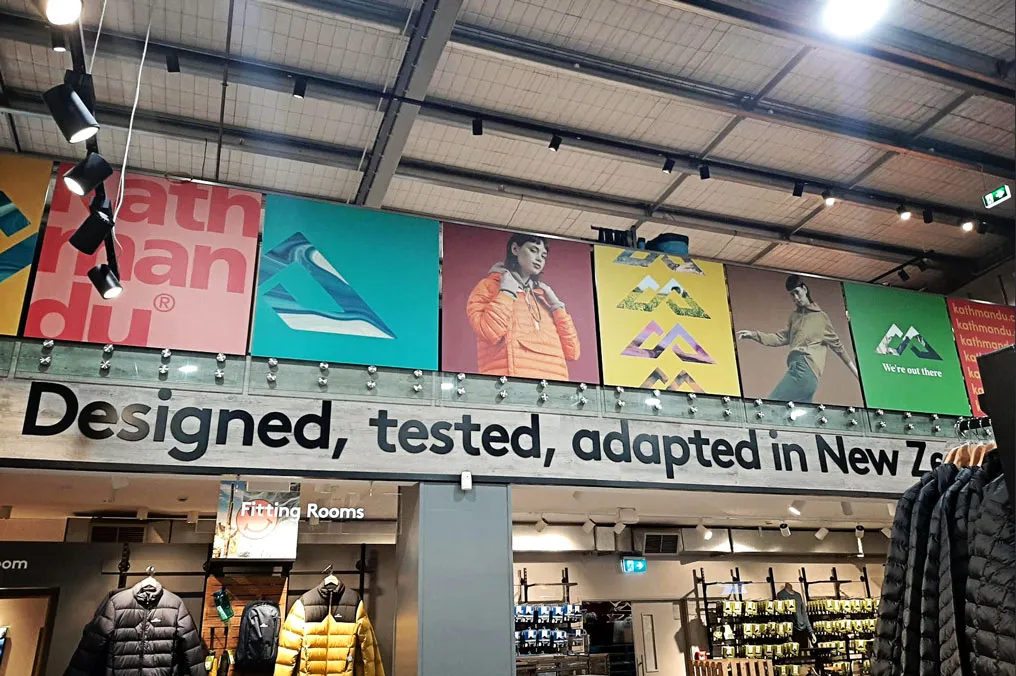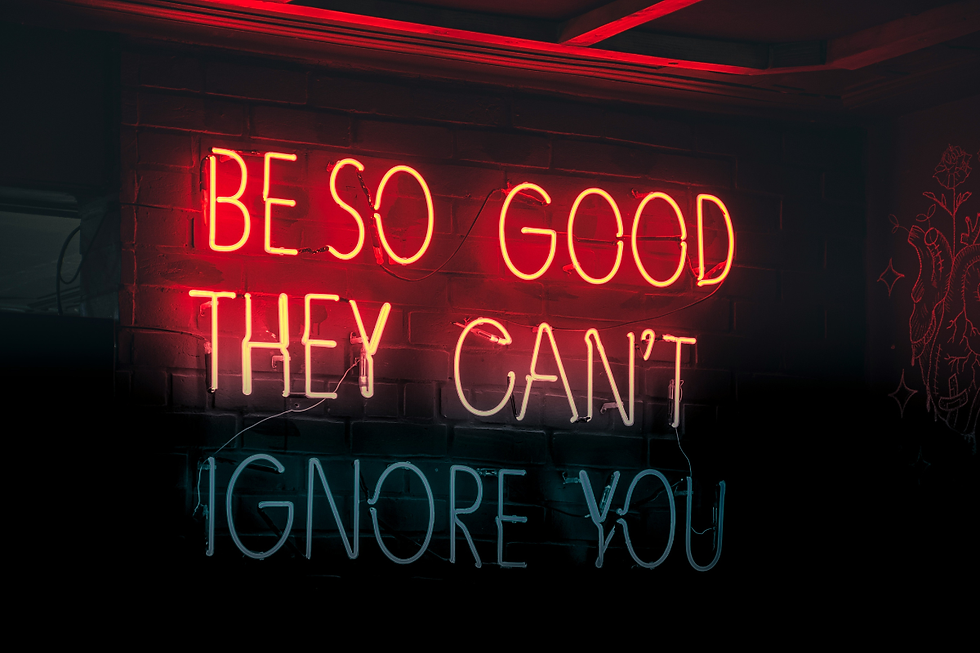Unlocking the Shopper Journey: Mastering the art & science of the communications hierarchy
- Lisa Donaldson

- May 30, 2023
- 5 min read

Have you ever had a feeling of being overwhelmed once you enter a store? Or felt like you didn’t know where to go or what to do? Or finding the price of a product, or where to get some help on finding that product you were looking for. Alternatively, have you had those experiences where you feel like it’s easy to find what you need and love ticking off your shopping list with ease and uncovering something new, cool, or interesting? If so, this is you consuming a shopper journey which has been enhanced or eroded through the communications hierarchy.
A customer or brand experience is the impression you get of the retailer or brand based on the interactions they have with you. In a bricks and mortar store, all the messages and signage are signals and opportunities for them to enhance a customer’s shopping experience and make them love a brand, love being there and love coming back.
There are many aspects to creating a great brand experience and while store design and visual merchandising create the wow, and operational processes and efficiencies deliver the service solutions, a key enabler of the in-store experience, that’s often overlooked, is the overlay of ‘signage and messaging’.
Signage and messaging overlays should communicate every aspect of the brand we need to convert shoppers into buyers:
Brand signage to identify
Wayfinding to navigate
Imagery to show personality
Promotions and pricing to inspire and engage
Information to support and guide
Service solutions to add value and give confidence
Brand values to secure my relationship with you
Successful messaging overlays don’t just happen, they are planned.
Planning your brand messaging is called a communication hierarchy.
A communication hierarchy is the way and order in which you relay your brand messaging to customers.
And sometimes we have A LOT to say. We have all had flashbacks to a time when operations, a supplier or marketing manager wants to put a new initiative or product information in store. Maybe something needs a boost or explanation and “ta da” they have given you an A3 poster to put somewhere to “help the customer.” Or even worse, it’s something that doesn’t need to be customer facing in-store!
Defining what you want to say and prioritising your most important brand messages are fundamental to developing a communication hierarchy ensuring the important messaging gets cut through in the right place, at the right time via the appropriate touchpoint.
Excellent communication hierarchies are a combination of art and science which not only effectively communicates your brand messaging within a store environment but also provides a clear framework and process for those messages to stay relevant, engaging and purposeful. There are 3 key aspects we review when planning a communication hierarchy:

1. Understanding the shopper journey
Knowing where and when to inspire and excite, engage and convert, inform and secure with relevant messaging is critical on the shopper's journey
Planning communications relevant to the zone “I’m shopping in” will help to ensure the right messaging cuts through and we don’t over communicate and confuse
Some messages are only relevant to the zone “I'm shopping in”, for example there is no point in communicating product offers when I have just completed my sale and I’m exiting the store
Understanding your shopper journey will help determine hard coded brand messaging vs. temporary/ change out or digital messaging locations
2. Position in the right sightline level
To help ensure messaging is seen in store we need to use the available space effectively
Some messages work better in different sight line levels of the store
There are 3 sight line levels:
High level – Think “Experience” for navigation and brand messaging, can be a mix of imagery and headline text. NOT product specific or detailed
Eye level – Think “WIIFM” (what’s in it for me) for Hot deals, services, hints + tips. Key messaging that will make customers lean in.
Buy level – Think “confidence” for product features and benefits, ticketing.
3. Use of colour and effective retail design
Some colours are retail call out colours – some colours are not
Red, Yellow, orange – vibrant retail colours psychologically talk to special and sale – neutral, pastel colours do not
Don’t overuse colour for functional messaging like navigation, generally a rainbow store is a confusing store (unless it’s for kids 😊 or a distinct brand experience)
Using specific brand colours consistently for things like information and services can help customers find the info they are looking for, and reinforce your brand in key shopping moments
If the application and use of colour isn't considered as part of the design process, the right level of emphasis is not given to the message
Retail messaging design is a specialist skill – think in headline text and don’t get caught up in too much detail
A piece of POS or a ticket can’t be used to communicate everything!
This may seem logical but often this discipline is not implemented and the skill not nurtured in retailers. Advertising and design agencies often lack the depth of team to work on this which can be a combination of semi-permanent to here today/gone tomorrow. But they are incredibly powerful in the role of engaging the customer and converting them into a buyer.
Signage and messaging overlays are often seen as the cherry on the top of your experience, but it is a super-critical factor in helping to bring your brand to life. More so as we develop connected-commerce experiences. For example, imagine you saw an offer for a new mobile phone offer that excited you. Let's say the offer is when you buy that phone through this retailer you get something free. But you get to the store and there are no communications for it. Furthermore, there are lots of other pieces of information “shouting at you.” All the sales team are busy. 9/10 of the customers will simply leave the store unimpressed by the customer experience and vote with their feet. Possibly buying elsewhere.

It's as easy as 1-2-3
Understand your physical customer journey
Develop your communication hierarchy
Implement it into every internal and external piece of branding, advertising, and marketing you develop
This will give your brand a positive, long-lasting impression that will stick with your shoppers forever.
The customer experience will continue to evolve in retail and with the implementation of technology this will continue to change and iterate. But the basic fundamentals of Communications Hierarchy remain constant and customers love not only consistency but experiences that enhance their experience. You can’t just wing that, it must be carefully considered and strategically developed. But once you nail it. Genius.
Overseeing the customer experience for your company may feel overwhelming at times. Perhaps you’re wondering where to start as your business has always done what it has always done. Here at RX, we’re here to help. It might be as simple as a phone call and we’ll help you start managing your in-store customer experience today and convert more shoppers into buyers and buyers into raving loyalists.















Comments